| [1]Dejak B,M?otkowski A.3D-Finite element analysis of molars restored with endocrowns and posts during masticatory simulation.Dent Mater.2013;29(12):e309-317. [2]Frankenberger R,Zeilinger L,Krech M,et al.Stability of endodontically treated teeth with differently invasive restorations:adhesive vs non-adhesive cusp stabilization.Dent Mater.2015;31(11):1312-1320.[3]Juloski J,Apicella D,Ferrari M.The effect of ferrule height on stress distribution within a tooth restored with fibre posts and ceramic crown: a finite element analysis.Dent Mater. 2014; 30(12):1304-1315.[4]Huang SF,Chen WR,Lin CL.Biomechaniacl interactions of endodontically treated tooth implant-supported prosthesis under fatigue test with acoustic emission monitoring.Biomed Eng Online.2016;15:23.[5]Y Qian M,Zhong Q,Chen S.Composite of clinical effects of Co-Cr alloy cast post-core and everstick fiber post in restoration of labially or lingually inclined maxillary central incisor.[J].Shanghai Kou Qiang Yi Xue.2017;26(1):89-93. [6]Szeftel M.Fracture resistance of teeth restored with all-ceramic inlays and onlays: an in vitro study.Oper Dent. 2013;38(6):626-634. [7]Madhavareddy SH,Mynampati P,Mandava RB,et al.The effect of cavity design on fracture resistence and failure pattern in monolithic zirconia partial coverage restorations-an in vitro study.J Clin Diagn Res.2017;11(5):zc45-zc48.[8]Guo L,Wang XJ,Wan R,et al.Clinical application of gold alloy onlay on restoration of molars with severe attrition.Chin J Prosthodont.2016.[9]Yu HY,Ma DD,Lin XY,et al.The clinic outcome of CAD/CAM onlay in the restoration of molars with extensive defect after root canal treatment.J Pract Stomatol.2017;33:41-44.[10]Lee KS, Shin JH, Kim JE,et al.Biomechanical evaluation of a tooth restored with high performance polymer pekk post-core system:a 3D finite element Analysis.Biomed Res Int. 2017; 2017:1373127.[11]Toniollo MB,Macedo AP,Pupim D,et al.Finite element analysis of bone stress in the posterior mandible using regular and short implants,in the same context with splinted and nonsplinted prostheses.Int J Oral Maxillofac Implants.2017; 32(4):e199-e206.[12]刘涛,耿海霞.下颌第一磨牙不同桩核位置数目金合金桩核修复后基牙应力的三维有限元分析[J].中国组织工程研究, 2017, 21(22):3501-3506.[13]王惠芸.我国人牙的测量和统计[J].中华口腔科杂志, 1959,7(3): 149.[14]Wendler M,Belli R,Petschelt A,et al.Chairside CAD/CAM materials.Part 2: flexural strength testing.Dental Mater.2017; 33(1):99-109.[15]Lin CL,Chang YH,Pa CA.Estimation of the risk of failure for an endodontically treated maxillary premolar With MODP preparation and CAD/CAM ceramic restorations.J Endod. 2009;35(10):1391-1395. [16]Aversa R,Apicella D,Perillo L,et al.Non-linear elastic three-dimensional finite element analysis on the effect of endocrown material rigidity on alveolar bone remodeling process.Dent Mater. 2009;25(5):678-690. [17]Jiang W,Bo H,Yongchun G,et al.Stress distribution in molars restored with inlays or onlays with or without endodontic treatment: a three-dimensional finite element analysis.J Prosthet Dent. 2010;103(1):6-12.[18]Lin CL,Chang YH,Chang CY,et al.Finite element and Weibull analyses to estimate failure risks in the ceramic endocrown and classical crown for endodontically treated maxillary premolar.Eur J Oral Sci.2010;118(1):87-93. [19]Maceri F,Martignoni M,Vairo G.Mechanical behaviour of endodontic restorations with multiple prefabricated posts:a finite-element approach.J Biomech.2007;40(11):2386-2398.[20]Nakamura T,Imanishi A,Kashima H,et al. Stress analysis of metal-free polymer.Prosthodontics. 2000;14(5):401-405.[21]Teixeira EC,Teixeira FB,Piasick JR,et al.An in vitro assessment of prefabricated fiber post systems.J Am Dent Assoc.2006;137(7):1006-1012. [22]Yang X,Tang Z,Wei Y,et al.3D finite element analysis on the effect of MOD cavity design of maxillary first premolar on restoration with all ceramic inlays.Chin J Dent Mater Dev. 2017;3:129-133.[23]Yamamoto T,Takeishi S.Finite element stress analysis of indirect restoration prepared in cavity bases.Dent Material J.2007;26(2):274-279.[24]Peumans M,Valjakova EB,De MJ,et al.Bonding effectiveness of luting composites to different CAD/CAM materials.J Adhesive Dent.2016;18(4):289.[25]Lin CL,Chang WJ,Lin YS,et al.Evaluation of the relative contributions of multi-factors in an adhesive MOD restoration using FEA and the Taguchi method-Dental Materials.Dent Mater.2009;25(9):1073-1081.[26]Parlar Z,Gokcek EU,Yildirim K.A Kahyaoglu.Influence of cavity design on stress distribution in second premolar tooth using finite element anylysis.Acta Physica Polonica A. 2017; 132(3):949-953.[27]Mei ML,Chen YM,Li H,et al.Influence of the indirect restoration design on the fracture resistance:a finite element study.Biomed Eng Online.2016;15:3.[28]Varga S,Spalj S,Lapter Varga M,et al.Maximum voluntary molar bite force in subjects with normal occlusion.Eur J Orthod.2011;33(4):427-433.[29]Lundgren D,Laurell L.Occlusal force pattern during chewing and biting in dentitions restored with fixed bridges of cross-arch extension.I.Bilateral end abutments.J Oral Rehabil.1986;13(1):57-71.[30]Gibbs CH,Mahan PE,Lundeen HC,et al.Occlusal forces during chewing and swallowing as measured by sound transmission.J Prosthet Dent.1981;46:443-449.[31]Koolstra JH,van Eijden TM, Weijs WA,et al.A three-dimensional mathematical model of the human masticatory system predicting maximum possible bite forces. J Biomech. 1988;21(7):563-576.[32]单辉祖.材料力学(4)[M].北京:高等教育出版社,2016:255.[33]陈新民.牙本质的力学性质[J].国际口腔医学杂志, 1989,16(1): 20-24.[34]林红.口腔材料学[M].北京:北京大学医学出版社,2013.[35]Su C,Su Y,Li Z,et al.In situ synthesis of bilayered gradient poly (vinylalcohol) /hydroxyapatite composite hydrogel bydirectional freezing-thawing and electrophoresis method. Mater Sci Eng C Mater Biol Appl.2017;77:76-83.[36]Han SH,Sadr A,Tagami J,et al.Internal adaptation of resincomposites at two configurations: Influence ofpolymerization shrinkage and stress.Dent Mater. 2016;32(9): 1085-1094.[37]Fronza BM,Rueggeberg FA,Braga RR,et al. Monomerconversion, microhardness, internal marginal adaptation, and shrinkage stress of bulk-fill resin composites. Dent Mater.2015;31(12):1542-1551.[38]Dejak B,Mlotkowski A.Three-dimensional finite element analysis of strength and adhesion of composite resin versus ceramic inlays in molars.J Prosthet Dent.2008;99(2):131-140. |
.jpg)
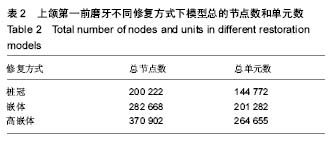
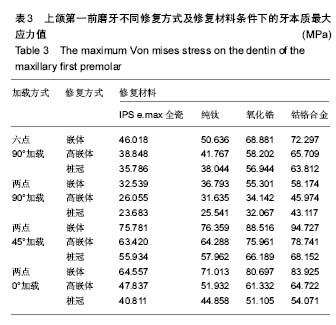
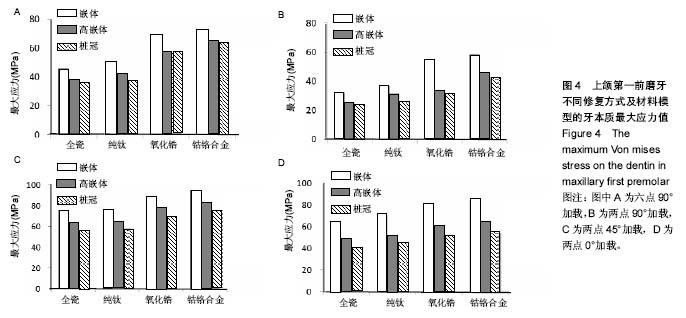
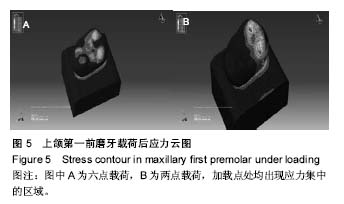
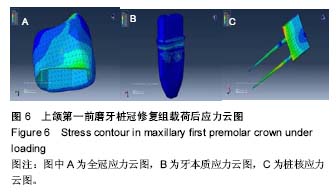


.jpg)
.jpg)
.jpg)
.jpg)
.jpg)